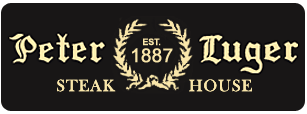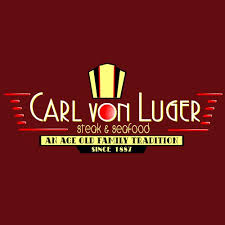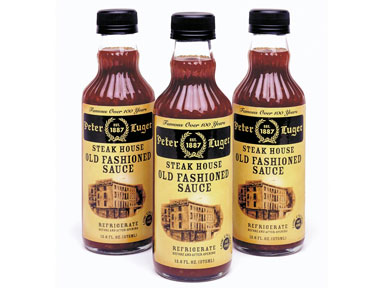Peter Luger Steakhouse dispute over its trademark with Carl Von Luger Steak and Seafood sizzles its way into court.
Peter Luger Steakhouse is seeking to protect its famous trademark in a dispute with Carl Von Luger Steak and Seafood.
The origins of the 130 year old Peter luger brand that began as Carl Luger’s Café, Billiards and Bowling Alley in New York claims that Pennsylvania steakhouse Carl Von Luger is liable for damages resulting from trademark and trade dress infringement.
The dispute hinges not so much on the name Carl Von Luger, rather what appears to be a false and misleading association between the steakhouses. Plaintiff, Peter Luger Inc., argues that this incorrect association has resulted in not just a likelihood of confusion, but actual consumer confusion, the gold standard in trademark infringement cases.
“To put it simply, Carl von Luger is acting as an imposter for the Peter Luger steakhouses and is ripping off its intellectual property and reputation. Robert Dickert created a fictitious name and is exaggerating his ties to Peter Luger in a deliberate effort to create a false association between Carl von Luger steakhouses and the famous Peter Luger steakhouses,” said Michael S. Elkin of Winston & Strawn, which is representing Peter Luger, Inc., the internationally known steakhouse, in the lawsuit against Carl von Luger Steak & Seafood.
The Peter Luger Inc., complaint alleges trademark infringement, false designation of origin, false advertising, trademark dilution, and unfair competition. Most damaging though may be the demand for cancellation of the Carl Von Luger trademark, which on its own, without any attempts to associate with the Peter Luger trademarks, would likely have been allowed to continue doing so.
Brands like Peter Luger do not seek to monopolize or keep others from competing, rather, they are obligated to protect consumers from any type of false association with their trademarks. Failure to protect the Peter Luger trademarks could lead them to the same fate as Escalator or Thermos, a generic mark free to use by all.
A full copy of the complaint can be view here.
I won’t keep you in suspense as to how this situation is likely to end (crossword hint: 10 letter word that rhymes with bettlement).
While I have never had the pleasure to frequent either establishment, the facts of this particular case present a great example of the do’s and dont’s of trademarks for any brand, restaurants in particular.
I truly believe that every attorney owes each client not only their legal opinion on the outcome of their trademark matter, but also a way to visualize both the facts and the legal ramifications of their circumcastances.
Legal advice that lacks both of these components is incomplete and can result in costly and negative consequences for a brand.
Anyone that is seeking to create and exploit a trademark must understand that the nuts and bolts of trademark law boil down to a goal that is one of public policy. The main priority of the law is to protect consumers from false or misleading brands.
In 2015, the U.S. District Court Southern District of New York decided another case involving a brand established in the 1800’s. The court’s decision in Tiffany and Co. v. Costco Wholesale Corp. reiterated their use of the ‘Polaroid’ factors to resolve disputes such as this one between Peter Luger and Carl Von Luger. (127 F. Supp. 3d 241 (S.D.N.Y. 2015)
Proving so impactful, courts still use the eight factor test, fifty-six years after it was established, in order to determine whether there is a likelihood of confusion between two trademarks. (see Polaroid Corp. v. Polarad Electronics, Corp., 287 F.2d 492 (2d Cir. 1961),
In this case between two restaurant brands, three of the Polaroid factors stand out.
The strength of the Plaintiff’s mark:
✓ Continuous use of the Luger trademark in the food industry since 1887.
✓ Named by Zagat as the best steakhouse in New York City over three decades in a row.
✓ Steak sauce and meats under the Peter Luger trademark sold worldwide, extending the trademark’s geographic reach to a global scale.
2. The degree of similarity between the Plaintiff’s and Defendant’s marks:
✓Use of the word Peter or Luger as part of the brand name Carl Von Luger.
✓Use of the plaintiff's establishment year 1887, in a false manner by the defendant.
✓A false association made claiming that Peter Luger and Carl Von Luger steakhouses are connected via ‘Carl’, Peter Luger’s nephew.
3. Evidence of actual confusion
✓Palm Beach Post article, which falsely reports that Carl Von Luger’s planned Florida location is “an offshoot of Peter Luger of NY”.
✓Misleading report that Carl Von Luger Steak & Seafood is “a restaurant in the style of the renowned Peter Luger Steak House of New York”.
✓Direct evidence of actual consumer confusion in the form of inquiries that Peter Luger has received related to the Palm Beach Post article and their connection with Carl Von Luger’s planned North Palm Beach, Florida location.
The above facts have created a situation in which, a strong trademark in Carl Von Luger is likely in jeopardy and will need to be changed. It is an almost impossible task to disassociate two trademarks from one another once actual consumer confusion has occurred.
Significant guidance can be learned from the facts of this case, including three invaluable lessons.
How to build an extremely strong trademark.
- In order to even register a trademark with a surname, one must establish ‘secondary meaning’ by acquiring distinctiveness in the marketplace.
- This process is evaluated on a case by case basis and has seen corporations unable to meet the high standard required, even after a showing of many millions of dollars spent on promoting the trademark. (see Boston Beer Co. L.P. v. Slesar Bros. Brewing Co., 9 F.3d 175, 28 U.S.P.Q.2d 1778 (1st Cir. 1993).
- Peter Luger has continued to promote its intellectual property globally and has others promoting their brand on their behalf.
2. Understanding how intellectual property is created is imperative.
- Carl Von Luger is a registered trademark and because it does not refer to a living individual, the made up name itself is actually a ‘fanciful’ trademark, the strongest type of trademark a business can create.
- Based on their continuous use and widespread recognition of the Carl Von Luger name within the restaurant’s geographic locale, Carl Von Luger has most certainly acquired common law trademark rights to their name.
- The sight, sound, and connotation of the Carl Von Luger trademark is distinct when evaluated as a whole versus the Peter Luger trademark.
- Carl Von Luger made a crucial mistake though, one which is evidenced in their specimen submitted to the US Patent and Trademark Office, showing the trademark’s use in commerce.
- This illustrates that since at least, Apr. 29, 2011, the Carl Von Luger trademark has been portrayed to consumers in a misleading manner.
- In addition, Peter Luger alleges that Carl Von Luger has used the 'Luger' mark on it's own.
- This is problematic, because it is not the same as the distinct trademark that Carl Von Luger was granted registration for, and would likely be deemed to infringe on Peter Luger's common law trademark rights to the 'Luger' mark.
- Carl Von Luger, LLC was registered as a Pennsylvania corporation on February 1st, 2009, however it falsely advertises the brand as being “a family tradition since 1887.
- This is likely to be seen as confusingly similar to and creating a false association with Carl Luger’s Café, Billiards and Bowling Alley, the origins of the Peter Luger brand established in 1887.
- The sight, sound, and connotation of the Carl Von Luger trademark is distinct when evaluated as a whole versus the Peter Luger trademark.
3. Trademark law is an offensive and defensive sport that has no clock. Full time monitoring by an attorney of a trademark is a must for any brand seeking to take the path toward establishing a 130 year old brand as Peter Luger has done.
Peter Luger Inc., also alleges trademark dilution, a claim that requires proving some difficult elements. For more information on trademark dilution, see (RUN DMC Files Suit Over Unauthorized Use of its Famous Trademark - Someone Walked Their Way Right Into a Trademark Infringement Lawsuit)
It is unfortunate to see a brand, such as Carl Von Luger Steak and Seafood put in its current position. However, once actual consumer confusion has occurred, it is tough to see any result other than a name change that removes ‘Luger’ and any association with the Peter Luger trademark or its century plus old history.
As Michael S. Elkin of Winston & Strawn, which is representing Peter Luger, Inc., stated “This is an egregious example of the misappropriation of the Peter Luger name and reputation and we intend to defend our claim vigorously.”
This case shouldn’t even make it to a summary judgement hearing, where it it would surely be granted in favor of Peter Luger. My bet is that once a knowledgeable intellectual property attorney speaks with Robert Dickert, the owner of Carl Von Luger Steak and Seafood, the two sides will agree to meet at a table and help Mr. Dickert brainstorm a new name, while dining on a steak.
Although, on second thought, a neutral meal would be a better play. Might I recommend a corned beef and pastrami combo at Katz's Deli. *Pro-tip, ask for Benny from the Bronx, the best pastrami slicer anywhere.
The case is Peter Luger Inc v Carl von Luger LLC et al, U.S. District Court, Southern District of New York, No. 17-03767.



